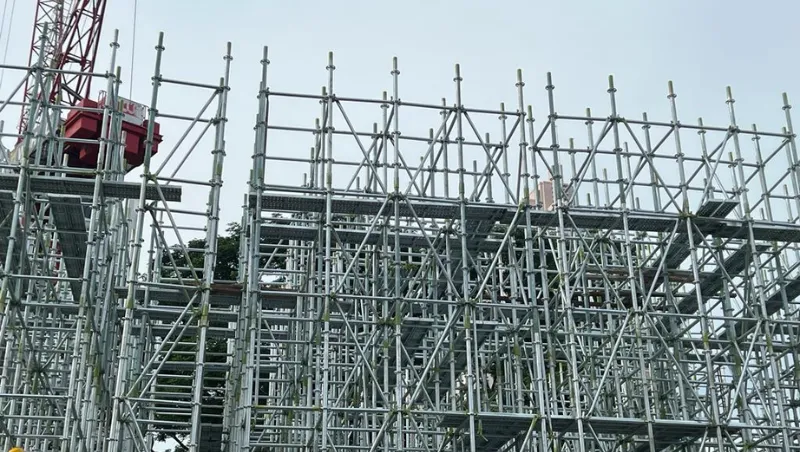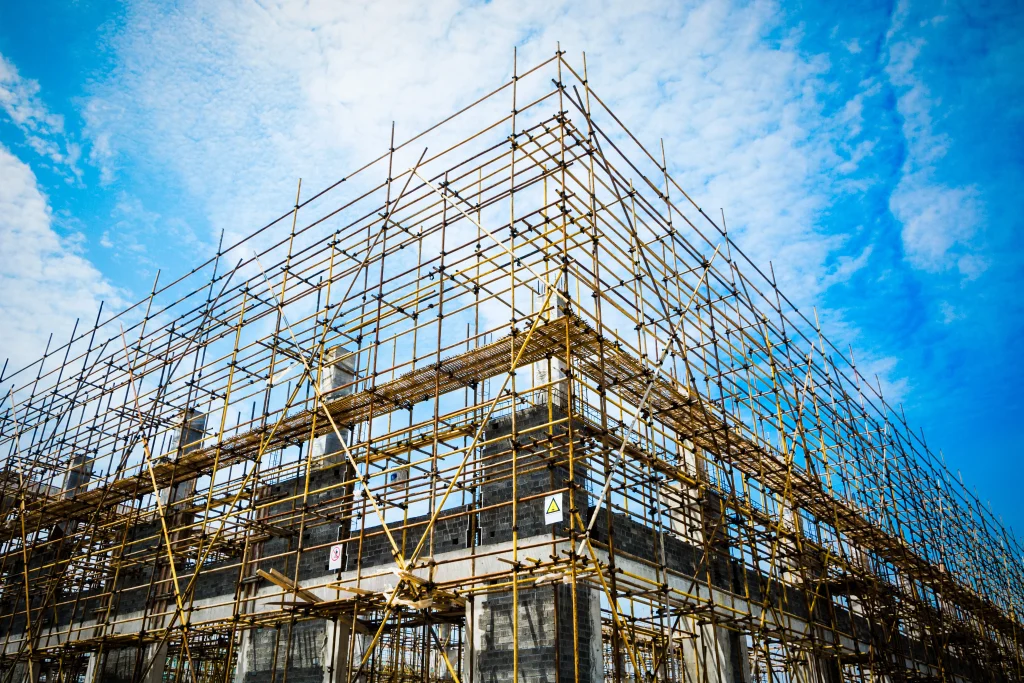
In the construction industry, the top priorities are efficiency and safety. Scaffolding, an essential element in construction projects, has undergone a notable transformation over time. Two major breakthroughs in this field include scaffolding frame and tubular scaffolding. These developments have transformed construction methods by providing improved safety, longevity, and productivity. This piece examines the intricacies of scaffolding frame and tubular scaffolding, highlighting their advantages, uses, and impact on contemporary construction techniques.
The development of scaffolding frame has played a crucial role in construction endeavors, offering a robust foundation for workers and materials. Initially crafted from timber, the progress in materials and engineering has paved the way for the prevalent utilization of metal scaffolding frame. These frames commonly comprise vertical and horizontal tubes that are interconnected to establish a firm and unyielding structure.
The shift from using timber frames to metal frames represented a major achievement in terms of construction safety and effectiveness. Metal frames provide enhanced strength and durability, enabling them to withstand substantial loads and harsh weather conditions. Moreover, their modular structure enables effortless assembly, disassembly, and transportation, thereby expediting their deployment at construction sites.
In addition, scaffolding frame has the ability to be tailored to meet the specific needs of a project. The adjustable parts allow workers to modify the scaffold according to different heights and setups, guaranteeing the best possible accessibility and functionality. This adaptability is especially beneficial in intricate construction settings, where conventional solutions may not be sufficient.
Moreover, scaffolding structures are equipped with safety elements like guardrails, toe boards, and non-slip surfaces to minimize the likelihood of accidents. By placing worker safety as a top priority, these structures enhance the work environment, promoting productivity and boosting morale at construction sites.
Improving Flexibility and Efficiency with Scaffolding Frame and Tubular Scaffolding
Tubular scaffolding signifies a significant advancement in construction technology, providing improved flexibility and efficiency in comparison to conventional scaffolding systems. In contrast to framed scaffolds, tubular scaffolding is characterized by a tubular framework consisting of interconnected tubes and fittings.
Tubular scaffolding possesses a key benefit in its ability to adapt to different construction situations. The modular design of tubular components permits swift assembly and reconfiguration, empowering workers to efficiently navigate obstacles and irregularities on the construction site. Whether constructing scaffolds around curved structures or spanning uneven terrain, tubular scaffolding provides a flexible solution to intricate construction obstacles.
Furthermore, tubular scaffolding demonstrates exceptional performance in terms of its ability to bear heavy loads and maintain stability. The sturdy construction of tubular components guarantees the structural integrity, even when subjected to substantial weights. This durability is crucial for providing a secure platform for heavy machinery, materials, and workers at elevated levels, effectively preventing any potential mishaps or structural collapses.
Moreover, tubular scaffolding systems are focused on simplicity in both usage and upkeep. The components are created with compatibility and interchangeability in mind, making inventory management and replacement processes easier. Furthermore, tubular scaffolds are commonly made from materials that resist corrosion, extending their longevity and decreasing maintenance expenses in the long run.
Leveraging the Potential of Hybrid Solutions: Embracing Integration and Synergy
The advantages of scaffolding frame and tubular scaffolding are maximized when they are integrated and work together synergistically. By merging the strengths of these two systems, construction experts can utilize a complete set of tools customized to meet the unique needs of every project.
For example, scaffolding frame can act as a sturdy base for vertical support, while tubular scaffolding enhances this structure by offering adaptable arrangements for complex spaces and specific tasks. This combination of methods optimizes productivity and safety, while reducing downtime and resource allocation.
Moreover, the progress in technology, including the implementation of Building Information Modeling (BIM) and digital simulation software, facilitates accurate planning and optimization of scaffold designs. Through virtual simulation of construction scenarios, stakeholders can effectively identify potential risks, enhance scaffold layouts, and streamline project workflows. This ultimately leads to cost savings and adherence to project schedules.
In summary, the advancement of scaffolding frame and tubular scaffolding has marked a crucial achievement in the construction sector’s pursuit of effectiveness and safety. These advancements have transformed construction methods, providing improved flexibility, longevity, and efficiency. Through the incorporation of these advancements and the utilization of digital resources, construction experts can enhance project results while emphasizing the safety and welfare of workers. As the construction industry progresses, scaffolding will continue to be a fundamental element, facilitating the fulfillment of ambitious architectural designs and infrastructure initiatives.



